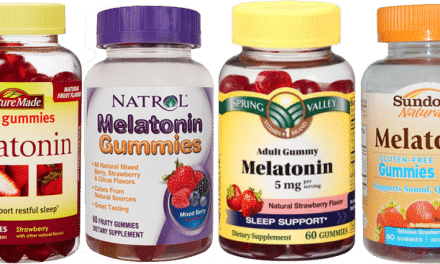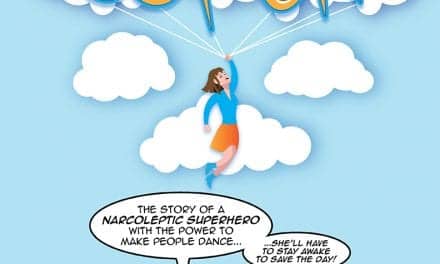As the investigational compound continues to be vetted by the FDA, research sheds light on its interactions with other common therapies, safety and adverse events, and abuse potential.
Pitolisant is a first-in-class molecule with a novel mechanism of action. The selective histamine 3 receptor antagonist/inverse agonist is being developed in the United States by Harmony Biosciences LLC for the potential treatment of excessive daytime sleepiness and/or cataplexy in adult patients with narcolepsy.
While the FDA reviews the New Drug Application, to which it granted Priority Review, research abstracts presented at the American Academy of Neurology (AAN) 2019 conference and SLEEP 2019 provide a collection of insights into the drug’s laboratory and real-world performance.
Use as Mono and as Combination Therapy
Pitolisant demonstrated incremental symptom improvement when added to common narcolepsy treatments in the Harmony 3 trial, an open-label real-world study that took place in France and Hungary from 2011 to 2012—”similar to the improvements seen when pharmacological agents are added on to CPAP use to treat residual excessive sleepiness,” says Harmony chief medical officer Jeffrey Dayno, MD.
A SLEEP 2019 abstract revealed that Epworth Sleepiness Scale (ESS) scores decreased 4.7 points (mean) from baseline to month 12 for patients on pitolisant alone; 3.2 points when pitolisant was added on to stimulants (such as modafinil); 3.6 points in patients when pitolisant was added on to anticataplectics (such as sodium oxybate); and 4 points when pitolisant was added on to stimulants and anticataplectics. Cataplexy episodes were reduced in patients who used pitolisant as monotherapy (-71.5%) as well as in those who used it as combination therapy with stimulants (-100%), anticaplectics (-100%), and who used all 3 drug types (-66%).
Another glimpse into how pitolisant interacts with common narcolepsy medications comes from a compassionate use expanded access program in the United States. Released at SLEEP 2019, interim data reveals that almost all patients (98.1%) in the expanded access program have previously tried other narcolepsy medications, and 89% of patients had been on two or more narcolepsy medications prior to being started on treatment with pitolisant. The safety/tolerability profile of pitolisant remained consistent with that seen in the clinical development program and the postmarketing setting in Europe—no new safety signals were identified.
Data has also been released from a formal drug-drug interaction pharmacokinetic (PK) assessment, conducted in two parts: one was with sodium oxybate and the other with modafinil. “It demonstrated no clinically relevant PK interaction between pitolisant and sodium oxybate as well as between pitolisant and modafinil,” Dayno says. “Based on these data, no dosage adjustments would be required when pitolisant is dosed with these common treatments for narcolepsy.”
Safety and Adverse Events
At SLEEP 2019, the highlights from an integrated analysis of safety (from Harmony’s New Drug Application work) were presented. It found pitolisant to be generally safe and well-tolerated. In the clinical trials, about 3% of patients in both the pitolisant treatment group and placebo discontinued from the trials due to an adverse event.
The most common adverse event was headache, which was reported by 18% of patients in the pitolisant arm and 13.7% in the placebo arm. “Headache is the most common adverse event, which has been consistent across the clinical trials in the development program,” Dayno says. “One potential strategy is you can lower the dose to adjust for tolerability issues.” He adds that headache and migraine are comorbid in patients with narcolepsy, so while it is one of the more common side effects of pitolisant, it is also commonly seen in patients with narcolepsy in general.
Effectiveness at One-Year
Harmony 3 data presented at AAN 2019 shared results from 68 patients who completed 12 months of treatment on pitolisant Overall, based on Epworth Sleepiness Scale (ESS) scores, 63.2% of patients were responders, with 36.8% of the 68 having their ESS score normalized at one year. What’s more, partial and total cataplexy attacks were reduced (-64% and -75%, respectively), as were hypnagogic hallucinations (-54%) and sleep paralysis (-63%).
“Recognizing it was an open label study, it’s important that it looked at excessive daytime sleepiness out to one year, which demonstrated reductions of about 5 points on the Epworth Sleepiness Scale, as well as durability of effect, which was maintained out to one year,” Dayno says. “The overall safety and tolerability profile was consistent with the data from the randomized controlled trials—similar tolerability profile in terms of the adverse events, no new safety signals, no evidence of development of tolerance with long-term use, and no symptoms related to withdrawal in those patients who discontinued the study.”
In addition to the Harmony 3 data unveiled at the AAN and SLEEP conferences, a longer manuscript with additional data has been accepted for peer-reviewed journal publication and is expected to publish later this year.
Abuse Potential
Data was also recently released about the abuse potential of pitolisant. A SLEEP 2019 abstract compares pitolisant against the Schedule IV stimulant phentermine—a common active comparator in abuse potential studies—and against placebo.
Pitolisant demonstrated significantly lower drug liking and willingness to take drug again compared with phentermine and a profile similar to placebo. “What’s most interesting is that the overall profile of pitolisant looks very similar to placebo on the majority of the scales used in this abuse potential study. We’re not seeing a signal suggestive of significant abuse potential,” Dayno says.
Sree Roy is editor of Sleep Review.






Great article Sree.
Very interesting for us Pwn (people with narcolepsy)
Thank you, Feri. I’m glad the information was relevant to you. I found it to be quite interesting as well!